5.1: Overview of Chamber music
- Page ID
- 168792
Chamber Music.
As described the Chapter 2.3, Chamber music refers to smaller ensembles performing together. The word "chamber" is in contrast to the "concert hall," because chamber music was often performed traditionally in smaller venues (someone's private chambers). That doesn't mean that chamber groups do not perform in large venues--but that's where the term is derived from. Take a look at a few of these chamber ensembles below, and then go to the next page, where you'll learn more about Baroque Chamber Music.
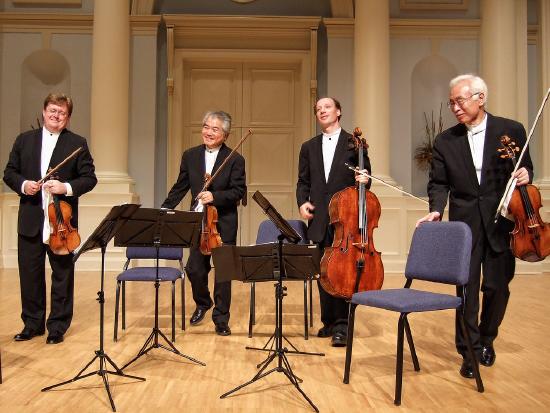
You've already been exposed to the string quartet, which is a very popular and traditional chamber ensemble, firmly established as a musical genre in the Classical Era (1750-~1820). Although the notion of 4 string players playing together was popular in the Baroque Era (1600-1750), they were usually accompanied by a harpsichord (you'll see this instrument more in Chapter 7 on Keyboard music). It wasn't until the Classical Era where the ensemble becomes a staple in instrumental music. Composer Joseph Haydn (you'll recall from the previous chapter) was very influential in helping to establish the string quartet within the Classical Era.
"Tokyo String Quartet at Samford University" by ralph and jenny is licensed under CC BY 2.0.
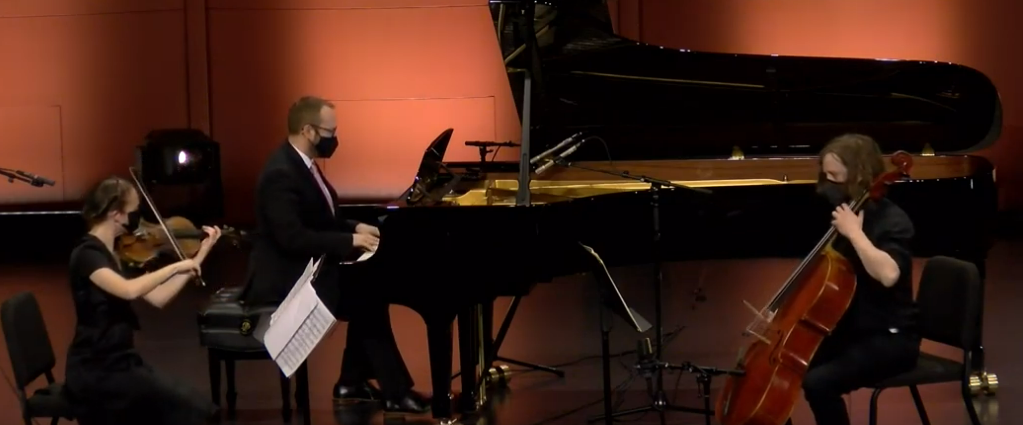 The piano trio is another common type of chamber ensemble, which also was established in the Classical Era. Composers like Haydn, Mozart, and Beethoven wrote many works for this group of instruments: a pianist, violinist and cellist. Similar to the string quartet, the term piano trio is used to refer to the ensemble of musicians, as well as the multi-movement work that composers wrote! "I'm a member of a piano trio, and our recital includes Beethoven's 3rd piano trio."
The piano trio is another common type of chamber ensemble, which also was established in the Classical Era. Composers like Haydn, Mozart, and Beethoven wrote many works for this group of instruments: a pianist, violinist and cellist. Similar to the string quartet, the term piano trio is used to refer to the ensemble of musicians, as well as the multi-movement work that composers wrote! "I'm a member of a piano trio, and our recital includes Beethoven's 3rd piano trio."
(If you're interested in seeing an actual trio of pianos, I wrote a piece for 3 pianos years ago -- the video is here. It was very hard to get 3 pianos on stage like this!)
"Upton Trio" at PGCC. Screenshot taken from YouTube.
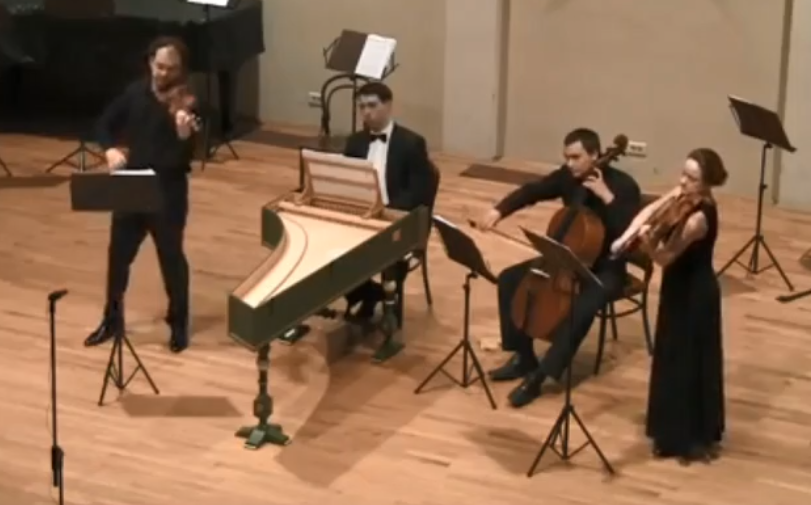
Chamber music was popular well before the Classical Era. In the Baroque Period (1600-1750), small ensembles were very popular, though the instrumental makeup and the form of the music was very different. Ensembles like the string trio consisted of 3 string players and a keyboardist (you'll see a picture of this to the left). These pieces often consisted of multiple movements as well, though the form was different than we see in the Classical Era.
Instrumental Sonatas were also popular; these usually consisted of a single soloist and a few other instruments accompanying them (you'll see an example in the following pages and the video lesson).
In the Baroque era, most all chamber ensembles included a harpsichord, a different and more delicate type of keyboard instrument (the second musician from the left in the picture to the left). You'll learn more about these ensembles in the following video lecture, and you'll learn about the harpsichord in more detail in Chapter 7.
Croatian Baroque Ensemble. Screenshot taken from YouTube.
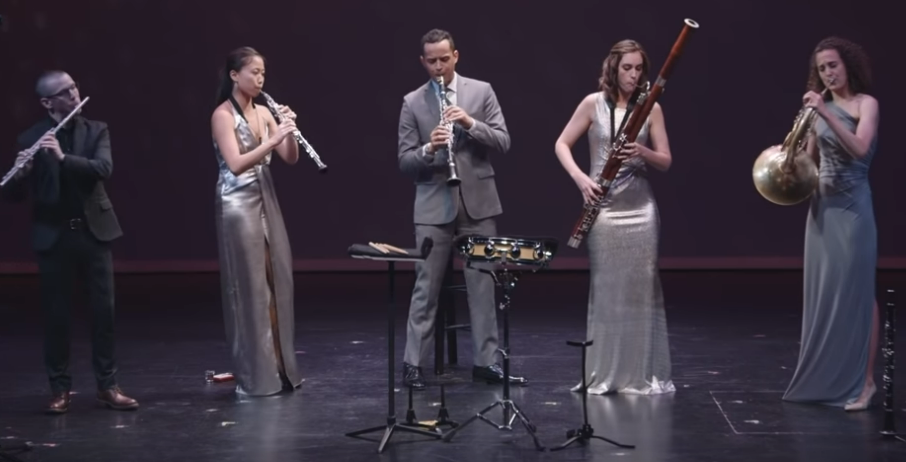
Not all chamber music involves string players. As you saw briefly in the chapter on instruments, wind players often get together and perform as a woodwind quintet. Though some composers wrote solely for small groups of wind players in the Classical Era, the woodwind quintet didn't become well-established as a musical genre until the 19th century (known as the "Romantic Era"). Modern composers often write for this group of instruments, as it provides more coloristic contrast in their writing. The picture to the right shows all five members of a woodwind quintet performing; you'll notice that each instrument is completely different, and produces sound differently from the others.
WindSync performance. Screenshot taken from YouTube.
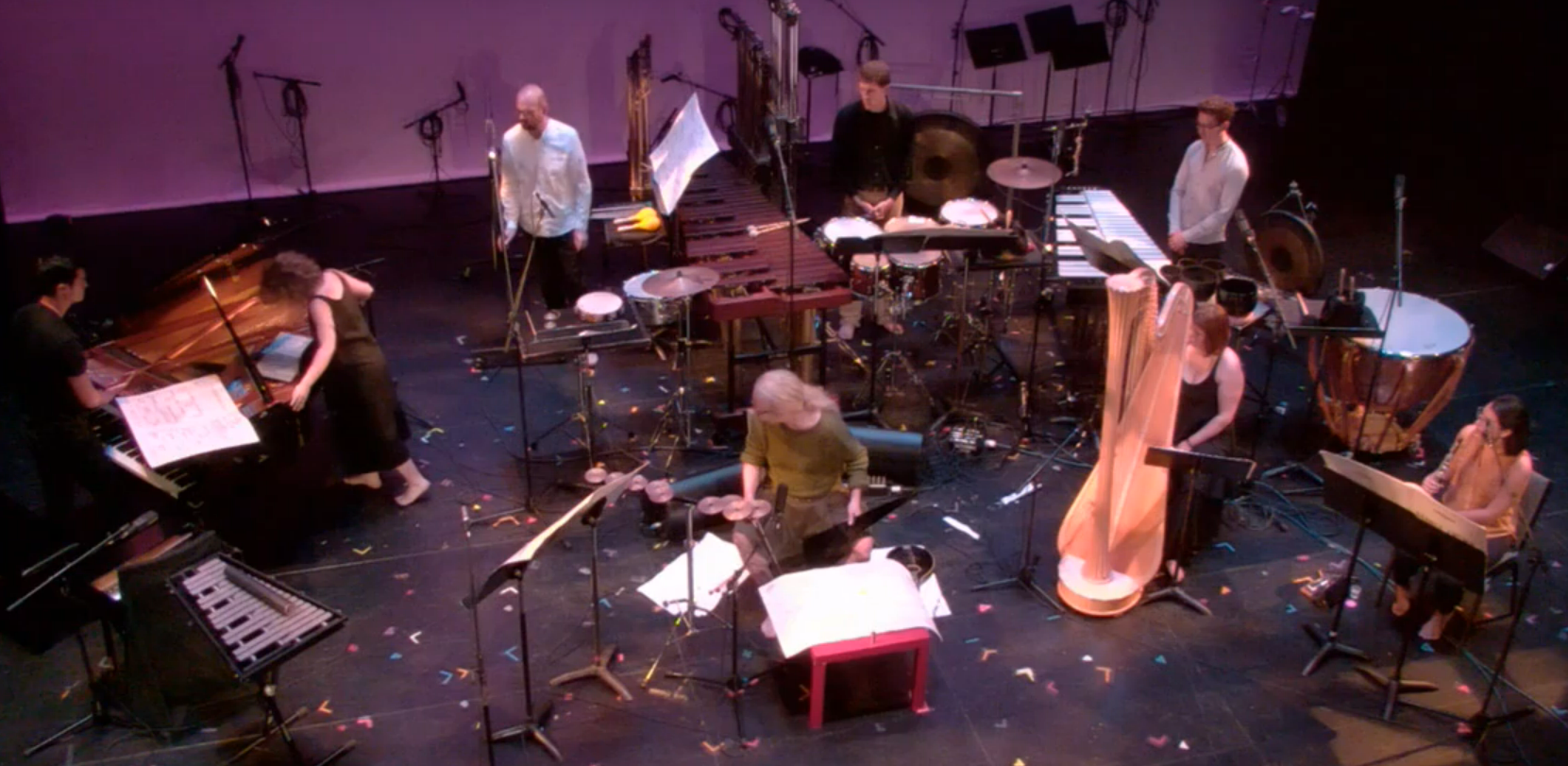
2016 Bang on a Can performance of George Crumb's "Ancient Voices of Children." Screenshot taken from YouTube.
And as we get into the modern day (20th century and beyond), composers begin to write for any group of instruments they want. This was actually done out of necessity; in the early 20th century, economic hardships partly due to the effects of World War I made it difficult to find larger ensembles to perform new works, so composers often wrote for whatever they could find. Composers like Schoenberg and Stravinsky are well-known for their eclectic ensembles consisting of instruments that traditionally wouldn't play together in small settings. The above picture shows an ensemble consisting of a variety of different instruments, including a woman yelling into a piano to create a unique sound, composed by George Crumb in 1970 (you'll explore this piece in more detail in the coming pages).
For those interested in downloading a PDF handout of this unit's PowerPoint file, click here.

